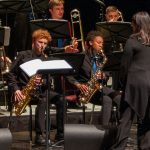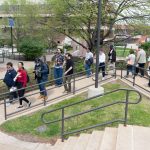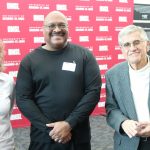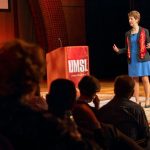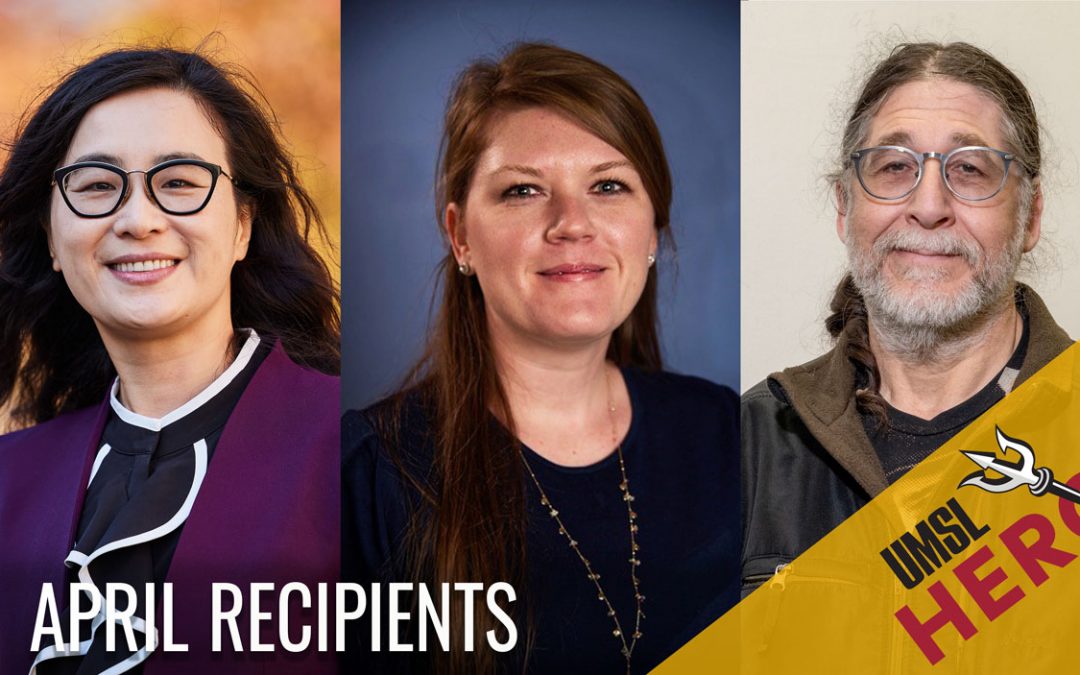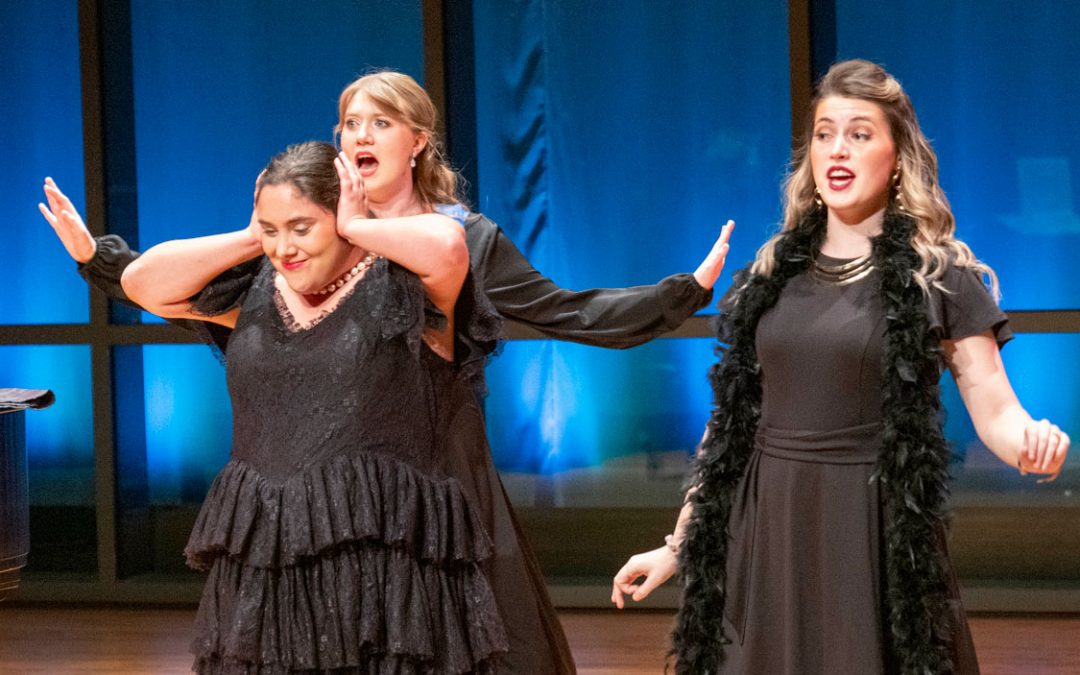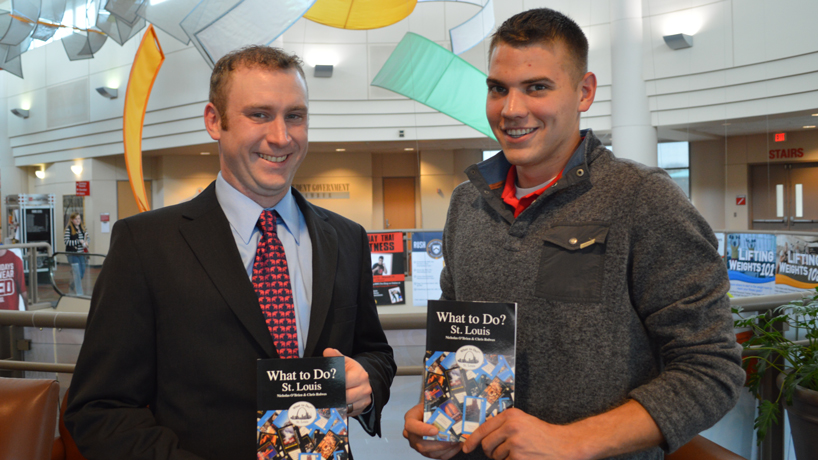
The group project that Nicholas O’Brien (at left) and Chris Rolwes helped pull together for course credit in a technical writing class in the spring of 2015 has since morphed into a real-life publication aimed to help people explore St. Louis. (Photos by Evie Hemphill)
“What do you want to do?”
“I don’t know. What do you want to do?”
It was this circular and all-too-familiar conversation that a handful of University of Missouri–St. Louis students set out to fix one day in the spring of 2015.
“You get in that cycle, just going around and around, and people can’t decide what to do,” says Nicholas O’Brien, now in his senior year at UMSL. “Our idea was to prompt you to do something where you don’t get stuck in that rut.”
Initially developed as a required group project in a technical writing course that semester, their idea – a game-based guide to St. Louis – had to be more than merely an idea in order to pass muster and earn a passing grade.
“What I try to do is get students to think in terms of reality, in terms of ‘How would this appear in real life? Who would it address, and why would it address those people?’” says Bill Klein, a longtime Department of English faculty member at UMSL. “By making it rhetorically real to the students, they can really tackle the issues about writing.”
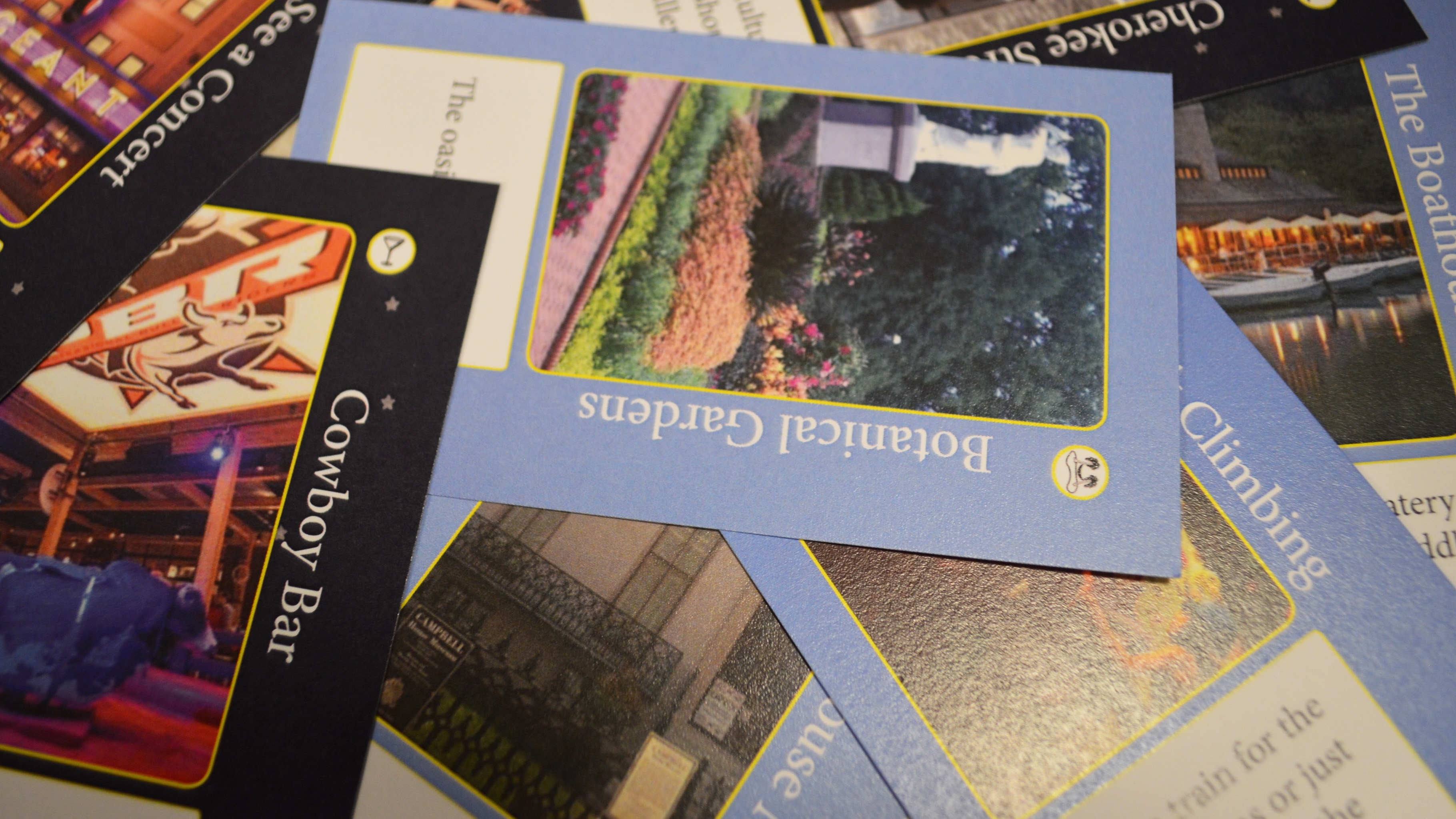
The new book includes a set of 128 playing cards featuring all sorts of things to do in St. Louis – plus instructions for various ways to play the card game depending on time of day and other factors.
The first rule was that it had to be something that hadn’t been done before. Once O’Brien’s group received Klein’s initial go-ahead, the students got to work with research and design, proposals, drafting and more.
“We cited research showing that if you give somebody 100 choices of what to do and they know one of them, they’ll do the one they know,” recalls O’Brien, an electrical engineering major. “It was a jars-of-jelly study. And if you put just four jars of jelly in front of somebody [instead of 100], where they knew one but not the other three, they were much more likely to pick one that they hadn’t tried before.”
The associated proposals, progress reports and executive summaries were primarily a means to end: providing practice with the very types of writing that aspiring engineers, computer scientists and those in related fields need to know. But as the group’s carefully developed plans and the game-based guide itself came together over the course of the semester, the project grew into something beyond an academic exercise for a couple of the students involved.
“At the end of the semester we had most of it – a rough draft of it – written, and after the semester Nick and I got together and kind of took it the rest of the way,” says Chris Rolwes, who earned his UMSL degree in computer science last fall. “For me it was really nice to see one of my class projects become something else, not just an idea.”
In January of this year, O’Brien and Rolwes opened up boxes full of hundreds of their now-printed book, “What to Do? St. Louis” – the gratifying and tangible fruit of their labor, first as UMSL classmates and now as co-authors.
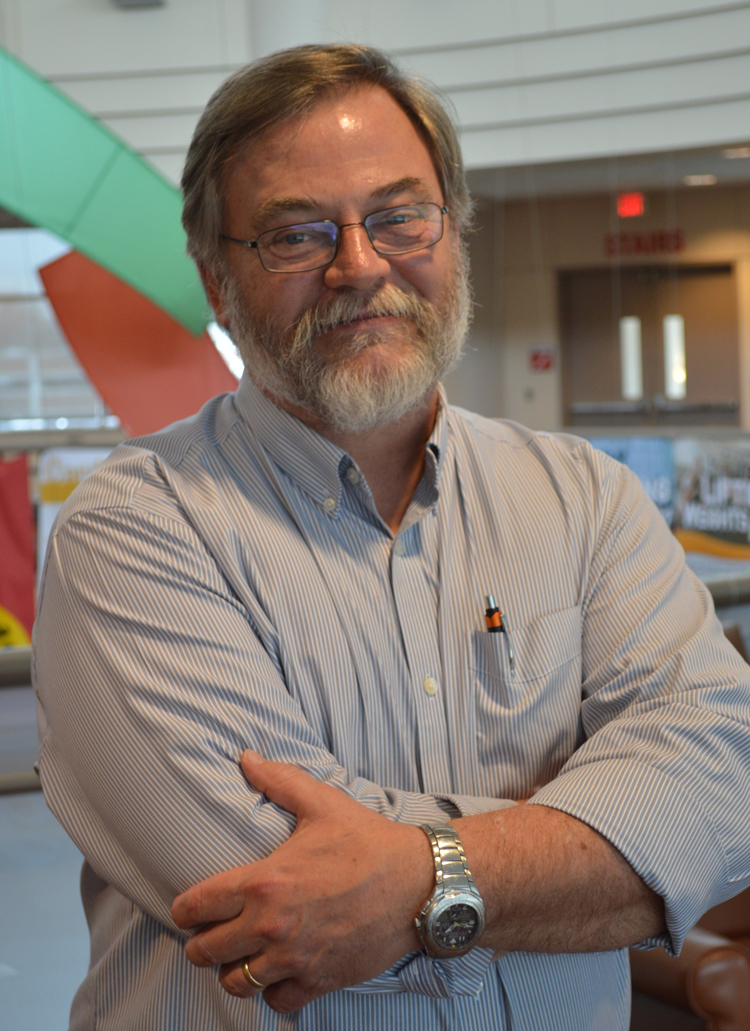
Along with UMSL classmates who contributed to the initial class assignment, the co-authors are quick to credit their instructor, Teaching Professor of English Bill Klein, for inspiring “What to Do? St. Louis.”
The book, which includes a 76-page index of personal recommendations of St. Louis haunts ranging from dining options to landmarks to activities, comes with 128 full-color, categorized playing cards arranged into two different decks.
There are also instructions for a variety of games that can be played with a partner or a group of friends or family members attempting to decide on a course of action in the city on any given day.
“They invented something new, and that’s just so cool,” says Klein. “What is really illustrated here is that the things we do at UMSL can be real. They can have a real impact on people and their lives. We’re not just reading books and taking tests and stuff. We’re preparing people.”
Currently selling the volume online and at several of the businesses mentioned in the book, O’Brien and Rolwes think the project could evolve even further, too.
“In the hopefully near future we’d like to turn this into a phone app,” says Rolwes, who recently joined the Marines and is headed to Quantico, Virginia, for training later this spring. “I think that’s where it could really take off.”
O’Brien notes that although bringing “What to Do? St. Louis” to completion has been a lot of work, the whole process was also really enjoyable for the duo.
“It was definitely a change of pace from a lot of the stuff we’re each working on,” he says.
A lot of that work was writing based, but the project also required on-the-ground research around town, such as experiencing indoor skydiving and stopping by local landmarks and restaurants that were new to them.
Klein, who first started teaching at UMSL in the late 1980s, is delighted to see where his former students have taken the project. He points out that it’s not the first time those in his technical writing courses have taken an idea and turned into a practical and even monetized application.
From a cholesterol-free beer that led to the development of Michelob Light, to spam filters, to a working hovercraft, Klein’s English class has proved a veritable hotbed of innovation over the years.
“It’s always nice to see these things happen,” he says.







